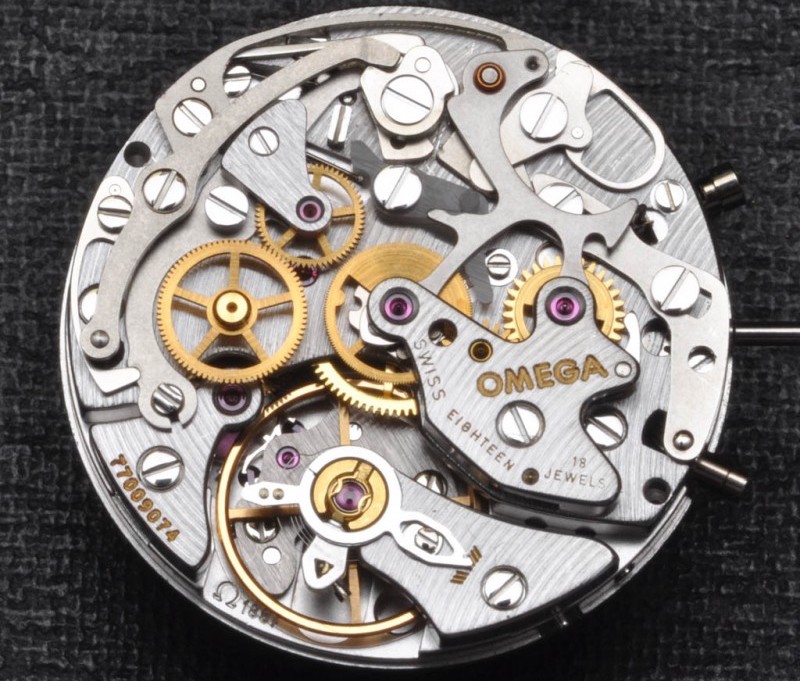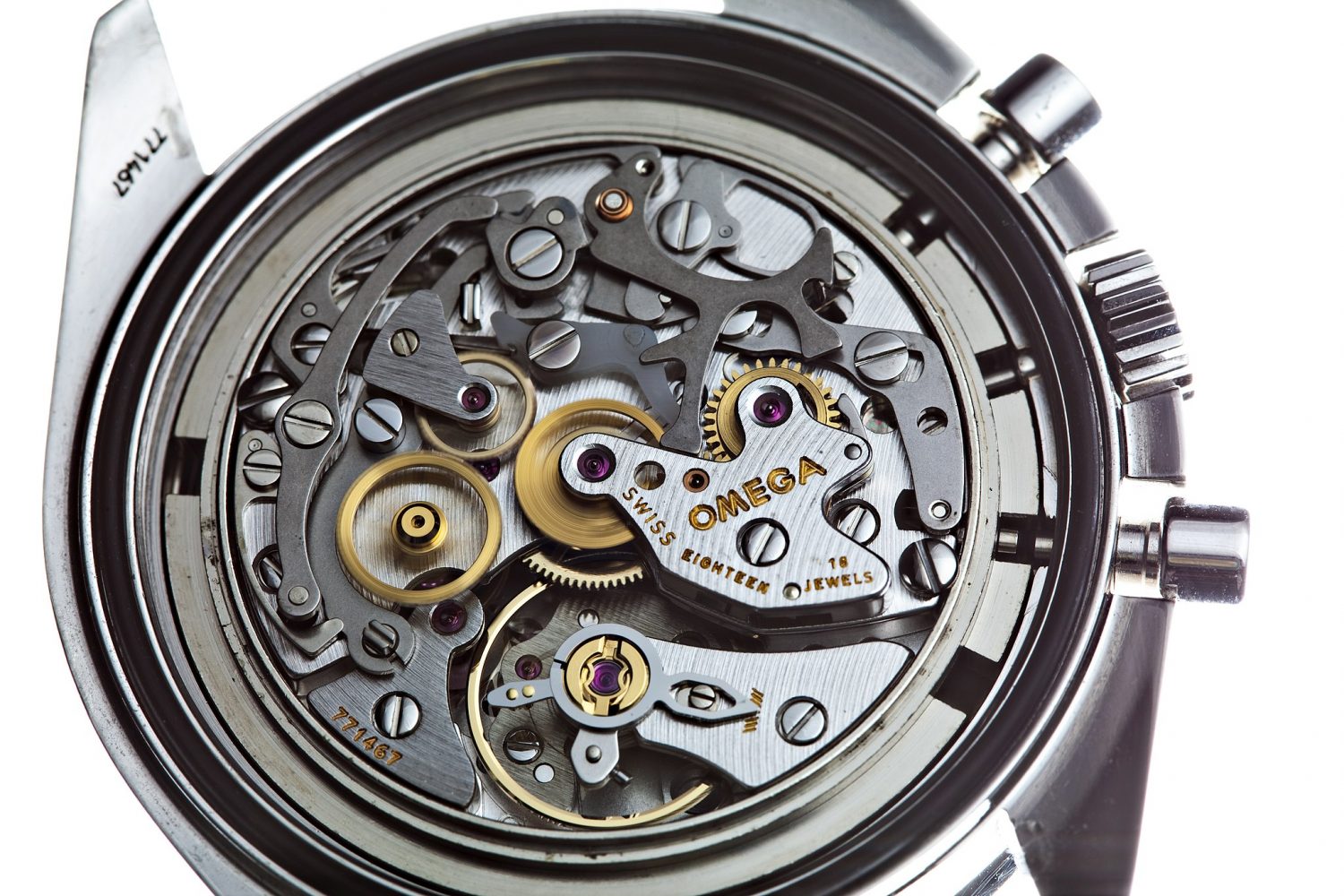
Omega Caliber 1861 Complete Guide
The Omega caliber 1861 may very well be one of Omega’s most iconic and well-known movements. Why? Because it has been in production since 1996, and if that is not a sign of performance and that Omega with the movement’s durability, we don’t know what is.
The Caliber 1861 is a chronograph movement, and is used in Omega’s most legendary model range – the Speedmaster. Throughout the years, it has been used in countless Speedmaster models. Most importantly the Speedmaster Moonwatch professional hesalite reference 311.30.42.30.01.005, is a descendant of the original legendary 42mm Moonwatch which was worn on the moon, and contributed to the immense success of the Speedmaster.
Let’s look at the caliber 1861 in detail.
Omega caliber 1861
The Omega caliber 1861 is a hand-wound chronograph movement from Omega which, in writing moment has had a production run of 26 years. Apart from the fact that it is used in Omega’s most iconic watch, its long production run proves it is singularly precise and reliable. This movement operates with a frequency of 21,600 beats per hour (3Hz). It offers a power reserve of 48 hours and is equipped with 18 jewels.

This movement is based on the Lemania 1873, which Omega previously used for the Speedmaster. It is not, however, a Master Chronometer (METAS certified), and since Omega has given this certification to more and more movements in its range in recent times, we can expect the 1861 to follow. With that said, it was only a matter of time before this caliber would eventually be replaced by a new, METAS-certified Moonwatch caliber. And in 2021, this proved to be true with the launch of the new Speedmaster Moonwatch.
The predecessor to the 1861 is the caliber 861. The difference between the 861 and the 1861 is that the 861 becomes the 1861 when the calibre is rhodium plated in 1996.
The caliber 1861 has a diameter of 27.00mm and a height of 6.87mm. Being a chronograph movement, it features a Chronograph hand, small seconds, Hours, Minutes. In turn, Omega has developed three new calibers that are based on the 1861. These include the caliber 1863, 1866, and 866.
Omega caliber 1861 accuracy
Omega’s specification for this movement is an average daily rate between -1 and +11 seconds per day. This is when the chronograph function is not active.
Omega caliber 1861 VS Caliber 1863
The Omega caliber 1861 and 1863 are two very similar movements. The 1863 is based on the 1861 and they have the exact same specifications. The difference lies in the fact that the 1863 is used for the see-through case back Speedmasters, whereas the 1861 is used in watches with a solid case back. As such, the difference lies in the decoration. The 1863 is more decorated and features circular graining on the baseplate, bridges with Geneva stripes (Côtes de Genève), as well as polished edges on levers and bridges. Furthermore, the Caliber 1863 has a metal chronograph brake and the Caliber 1861 has a Delrin chronograph brake made in a plastic polymer material.

Omega caliber 1863.
The easy way to describe the difference is that the 1863 is the more luxurious version of the 1861 as it is made to be seen, whereas the 1861 is not.
Source:Flickr: Omega Cal. 1861 Chronograph Movement

Omega Caliber 1861 specifications
- Jewels: 18
- Frequency: 21,600 beats per hour (3Hz)
- Functions: Chronograph, small seconds, Hours, Minutes.
- Diameter: 27mm
- Height: 6.87 mm
- Introduced: 1996
- Technology: Delrin chronograph brake is made of a plastic polymer material.





My Speedy has an 1861 movement and when I wind it the crown reverses some under tension. The watch works however, I’ve never seen a manual wind movement do this. My retailer told me that this normal and is called “backlash” I don’t whether to believe them or demand it be repaired. Can someone more knowledgeable that me confirm this is correct ? Thanks in advance.
Hi,
It is generally true that if you wind the watch a lot, the crown will eventually reverse slightly when you release it. To have some level of reverse is not uncommon, as long as it is not by a substantial bit.
It is connected to a spring and the spring opens up slightly when you release the “Pressure”, so nothing strange about this if it’s only a little bit.
Kind regards,
Millenary Watches
Mine does the same thing
My 2003 Omega Moonwatch Calibre 1861 was rebuilt at the Omega factory about a year ago after the mainspring broke. Since then it gains about 12 sec. per day. Is this unusual? I have recently demagnetized it.
Hi,
Omega’s specification for this movement is an average daily rate between -1 and +11 seconds. This is close to Omega’s specified accuracy so it’s not crazy off but if you want, there’s always the possibility to have a watchmaker regulate it to achieve a higher accuracy.
Kind regards,
Millenary Watches
Hi all,
My 1998 Moonwatch with 1861 calibre recently went in for a service (not with omega), but now when you start the chrono, it jumps back a second rather than starting timing from the 12 o’clock position? It also seems to only have a power reserve of 27 hours on a full wind? (I know it’s getting on a bit but still). It too, when winding the crown, spins back slightly on each turn.
Any thoughts? Should I be worried?
My watchmaker gave me 2 years warranty so I will be taking it back to them for a check up.
Cheers
The fact that the crown goes back a bit is common when the spring gets more tension. However, that it jumps back when you activate the chrono is less common. It’s likely just a minor adjustment to fix this. If it bothers you, you could consult with them. 27 hours of power reserve also sounds slightly low as it is expected to have about 48 hours.
Kind regards,
Millenary Watches